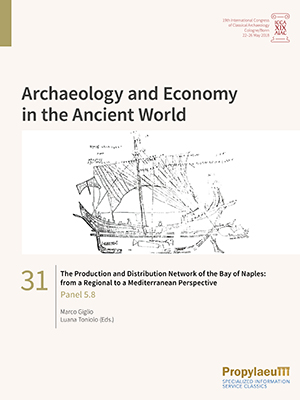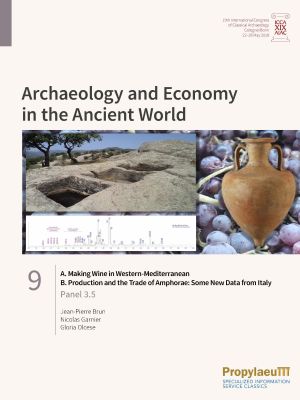Toniolo, Luana
The Production and Distribution Network of the Bay of Naples: from a Regional to a Mediterranean Perspective: Panel 5.8
Recent excavations on both production and consumption sites in Campania and international conferences on Roman pottery have given new impulses to the research on material culture and the regional and international pottery trade systems.
This volume analyses the circulation of pottery produced in the Bay of Naples between the late Republican and the early Imperial period from a double perspective: on one side the networks that transported pottery from the Bay to various points along the Mediterranean littoral; and on the other side the foods coming to Naples from various points in the Mediterranean.
The excavation contexts of Piazza Municipio in Naples, Puteoli and Herculaneum provide new relevant datasets both from the qualitative and quantitative point of view. This evidence highlights the strong relations of this area with the Eastern Mediterranean, especially in fine wares and transport containers - from the 2nd century BC Rhodian wine amphorai to 1st century AD Cretan products.
The area of the Magdalensberg imported Campanian Internal Red Slip ware as early as the late Republican period, and in especially high amounts in the Augustan age, when Campanian cooking wares are also attested in Aquileia, in northern Italy, the hotspot for the distribution of these vessels to the provinces of Northern Europe.
A. Making Wine in Western-Mediterranean B. Production and the Trade of Amphorae: Some New Data from Italy: Panel 3.5
The aim of this volume is to present new data and current multidisciplinary projects on viticulture in antiquity, on the production and circulation of wine, and on the containers that held the wine, involving archaeology, archaeometry, archaeobotany and molecular-archaeology.
The studies in this volume focus on Italy, and its relations to other areas (Spain, Malta), to deepen our knowledge of the transformations in the agricultural landscape. Another focus are wine production facilities, which have until now remained under-studied, such as rock cut vats.
The advancement of technical knowledge is gradually answering the old question of differentiating between wine and olive oil production facilities. We knew that the same presses were used for both products, but now, systematic floatation can turn up olive stones or grape seeds, and biochemical analyses in gas-chromatography or liquid-chromatography coupled with mass-spectrometry now provide very reliable results on the remains in vats.
The second part of the volume presents some new archaeological and archaeometric data related to the production and distribution of wine amphorae - coming from the Tyrrhenian coast of Italy, Spain and Africa - in Italy and the western Mediterranean, the study of which was also carried out using laboratory methods.








